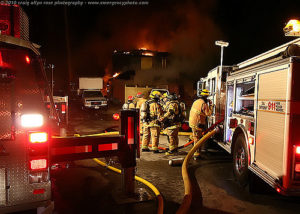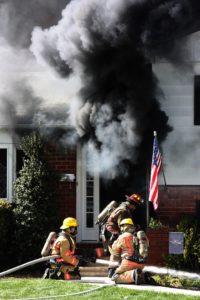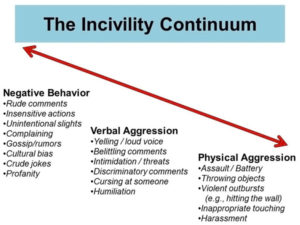By: Robert Avsec, Executive Fire Officer
An active fire service colleague of mine recently related the following incident that happened to her and a colleague on the scene of a structure fire. I’ve changed the names of the parties involved because this involves an on-going investigation by the department of how the incident was handled by departmental managers.
Firefighter Jones was the driver/operator of a tower ladder that responded to a structure fire. While setting up ground ladders to the second floor of the structure, she noticed that the male home owner was making his way around the exterior of the home. After placing the second ground ladder, Firefighter Jones saw the homeowner reposition the previously raised ground ladder.
About the same time, another firefighter, Firefighter Smith, also observed the homeowner’s action and went over to him to find out what was going on. Firefighter Jones then saw the home owner verbally accost Firefighter Smith and shove him backwards. When Firefighter Jones approached the pair to assist Firefighter Smith and find out what was going on, the home owner shoved Firefighter Jones to the ground.
Firefighter Jones was caught off-guard by this aggressive action (physical assault) on the part of the homeowner. After shoving Firefighter Jones to the ground, the assailant (homeowner) moved away from the scene and was subsequently detained by local law enforcement.
 While gathering her wits after this unprovoked assault, Firefighter Jones was descended upon by local law enforcement officers and fire officers peppering her with one question: Do you want to press charges? “I was still trying to figure out what had happened,” said Jones, “And all they wanted to know was did I want to press charges. Nobody seemed at all interested in finding out what had happened.”
While gathering her wits after this unprovoked assault, Firefighter Jones was descended upon by local law enforcement officers and fire officers peppering her with one question: Do you want to press charges? “I was still trying to figure out what had happened,” said Jones, “And all they wanted to know was did I want to press charges. Nobody seemed at all interested in finding out what had happened.”
Firefighter Jones didn’t know what to do—having never encountered such an action before—and was more interested in finding out why events unfolded the way that they had and why she and her co-worker had been assaulted during the course of doing their job. Without her wishing to press charges, the local law enforcement officers released the assailant who then continued to watch what was going on from a distance from various locations, just out of sight of Firefighters Jones and Smith who had resumed their duties.
The fire department’s managers conducted only a cursory investigation of the events at the time, actions that did not “sit well” with senior department leaders when they returned from being out of town. Those leaders initiated a subsequent investigation—that is on-going—into how the incident was handled by on-duty fire department managers. By the way, this incident happened on May 16th, but the investigation only got “rolling” the first week of June.
It’s no secret that the level of civility in the United States has taken a nose-dive in recent years, a development that is only been exacerbated by the level of incivility that’s been on display by the various candidates for the 2016 Presidential election. It should come as no surprise that an incident like the one encountered by Firefighters Jones and Smith happened.
When local law enforcement officers are hindered by persons from doing their job it’s called obstruction of justice. What’s the difference when firefighters are hindered from doing their job by the actions of a civilian? Suppose in the incident described above that additional ground ladders had not been raised—or other vital tasks to support the interior fire attack crews not been completed—placing those personnel in jeopardy. There are potentially very dire consequences when civilians obstruct the conduct of fire department operations.
How would your fire department handle such a situation? What policies, procedures and training is your department developing? Fire departments need to seek the answers to those questions because it’s only getting more uncivil out there.
 Fire & EMS Leader Pro The job of old firefighters is to teach young firefighters how to become old firefighters!
Fire & EMS Leader Pro The job of old firefighters is to teach young firefighters how to become old firefighters!